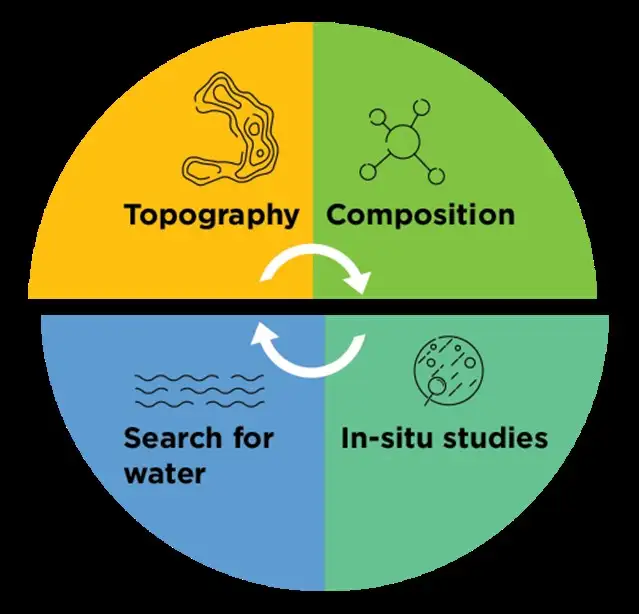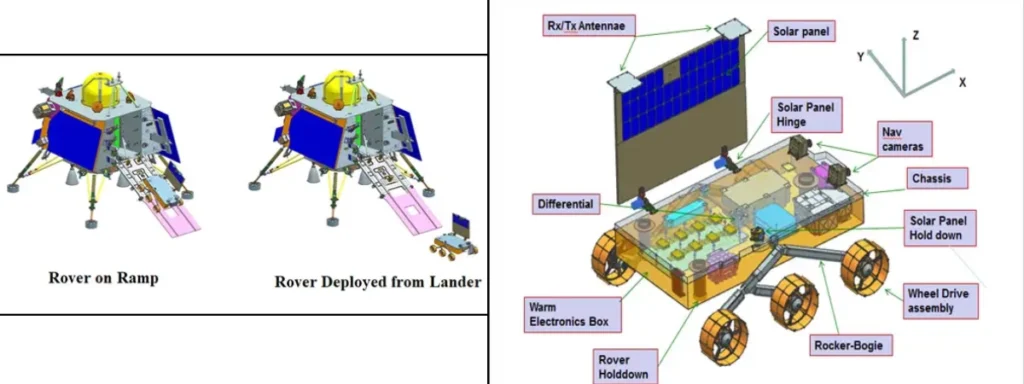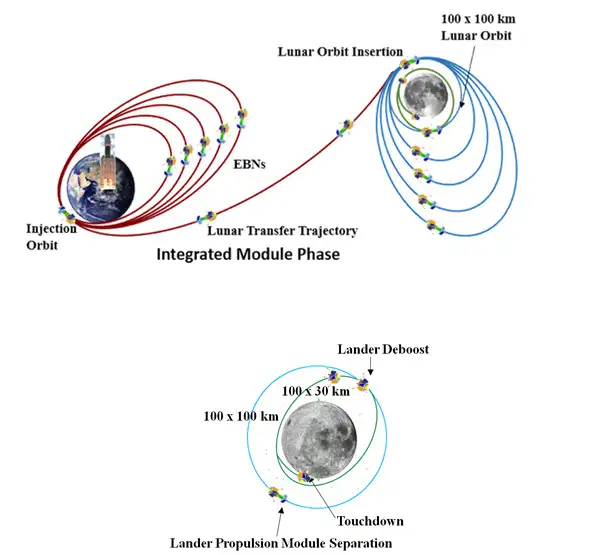Table of Contents
Introduction
The Chandrayaan missions are a series of Indian lunar space probes that aim to improve our understanding of the Moon, encourage technological growth, foster global alliances, and inspire a new generation of explorers and scientists. Chandrayaan-1 was India’s first mission to venture beyond Earth’s orbit. Whereas Chandrayaan 1 mission successfully achieved the goal by placing an orbiter in the moon’s orbit, Chandrayaan 2 partially failed its objective by only putting the orbiter in its orbit but crashing the lander on its surface. Chandrayaan-3 is a follow-up mission to Chandrayaan-2 designed to demonstrate end-to-end lunar surface landing and roving capability. Its launch is scheduled for 2.35 pm IST on July 14 from the Satish Dhawan Space Centre, Sriharikota.
Why Lunar Exploration ?
The Moon is the nearest celestial body where space exploration can be attempted and documented. It’s also a promising test bed for technology demonstrations for deep-space missions.
Background
I. Chandrayaan 1
On October 22, 2008, Chandrayaan-1, India’s first trip to the Moon, was successfully launched from SDSC SHAR in Sriharikota. To map the Moon’s chemical, mineralogical, and photo-geologic composition, the spacecraft was orbiting it 100 km from the lunar surface. Due to its low orbit, it was constantly close to the Moon and provided excellent data. Eleven scientific instruments built in India, the USA, the UK, Germany, Sweden, and Bulgaria were aboard the spacecraft. The orbit was boosted to 200 kilometers in May 2009 after satisfactorily achieving all the key mission goals. When communication with the spacecraft was lost on August 29, 2009, the satellite had completed more than 3400 orbits of the Moon.
Achievements
- It discovered the presence of water molecules in lunar soil and ice in the polar regions.
- The data collected through the microwave sensor indicates a good amount of past tectonic activity on the lunar surface.
- The Chandrayaan 1 terrain mapping camera recorded images of the US spacecraft Apollo 15 landing site on the Moon.
II. Chandrayaan 2
Chandrayaan-2 was a highly complex mission that was a big step forward in technology compared to ISRO’s previous missions. It had an Orbiter, a Lander (Vikram), and a Rover (Pragyan) to study the unexplored South Pole of the Moon. The goal of the mission is to learn more about the Moon’s origins and history through detailed studies of the Moon’s topography, seismography, mineral identification and distribution, surface chemical composition, thermo-physical properties of top soil, and composition of the Moon’s thin atmosphere. While landing on Moon’s surface, the lander “Vikram” crashed into the lunar surface, apparently because of an issue with its braking rockets. This issue has been sorted out by coding responses to each possible failing scenario.
Why South Pole ? The Lunar South Pole is particularly intriguing because the portion of the Moon's surface that remains in shadow is significantly larger than at the North Pole. Permanently shaded regions could contain water. In addition, the South Pole region has craters that are cold traps and preserve a record of the early Solar System.

Achievements
- Provide the most precise information about the presence of H2O molecules on the Moon till date.
- It has detected the presence of minor elements like Chromium, Manganese, and Sodium.
- It has explored the permanently shadowed regions as well as boulders and craters. This exploration will help to locate future drilling and landing sites.
Chandrayaan 3
Chandrayaan-3 is a follow-up mission to Chandrayaan-2 to demonstrate end-to-end capability in safe lunar landing and roving. It will have a lander (Vikram), Rover (Pragyan), but no orbiter like Chandrayaan-2. Its propulsion module will operate like a relay satellite. LVM3 will launch it from SDSC SHAR in Sriharikota. The lander and rover configuration will be carried by the propulsion module until they reach 100 km. The Spectro-polarimetry of the Habitable Planet Earth (SHAPE) payload aboard the propulsion module will be used to analyze spectral and Polarimetric measurements of Earth from lunar orbit.

Lander: The lander is also generally box-shaped, with four landing legs and four landing thrusters. It has a mass of 1752 kg, including 26 kg for the rover, and can generate 738 W using side-mounted solar panels.
Lander payloads: Chandra’s Surface Thermophysical Experiment (ChaSTE) to measure the thermal conductivity and temperature, the Instrument for Lunar Seismic Activity (ILSA) to measure seismicity around the landing site; and the Langmuir Probe (LP) to estimate plasma density and its variations. NASA has provided a passive Laser Retroreflector Array for lunar laser ranging studies.

Rover: The Rover is a rectangular chassis with six-wheel rocker-bogie wheel drive. It has navigation cameras and a solar panel capable of producing 50 W. It communicates with the Lander directly via Rx/Tx antennas.
Rover payloads: Alpha Particle X-ray Spectrometer (APXS) and Laser Induced Breakdown Spectroscope (LIBS) to derive the elemental composition in the vicinity of landing site.
GSLV-Mk3 will place the integrated module in an Elliptic Parking Orbit (EPO) size ~170 x 36500 km. Chandrayaan-3 consists of an indigenous Lander module (LM), Propulsion module (PM), and Rover designed to develop and demonstrate new technologies for interplanetary missions. The Lander will soft land at a lunar site, while the Rover will conduct an in-situ chemical analysis of the Lunar surface. The Propulsion Module will carry the Lander module from launch vehicle injection to the final lunar 100km circular polar orbit and separate LM from PM. The Propulsion Module also has one scientific payload that will operate after separating the Lander Module.

The mission objectives of Chandrayaan-3
- To demonstrate a Safe and Soft Landing on the Surface of the Moon.
- To showcase Rover roving on the Moon.
- To carry out in-situ scientific research.
Conclusion
The Moon is our most reliable link to the distant past of Earth. It preserves a pristine archive of the early Solar System’s atmosphere. To study the Moon’s origin and evolution, extensive mapping is needed. Artemis and Chandrayaan missions will enhance our understanding of the Moon, stimulate the advancement of technology, promote global alliances, and inspire a future generation of explorers and scientists.




